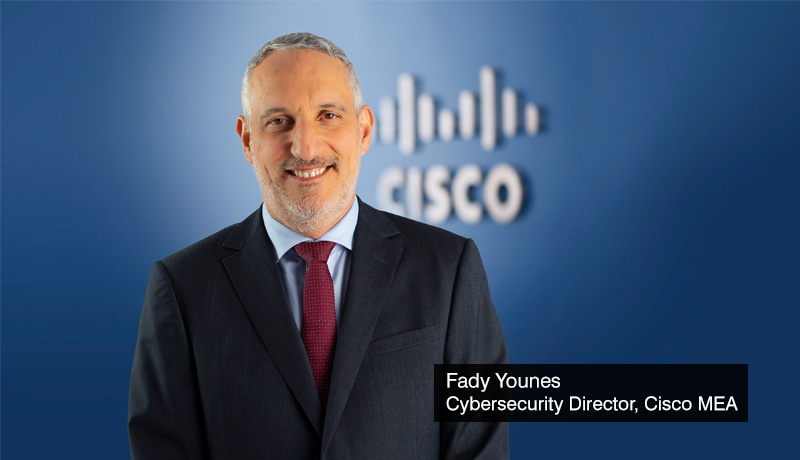
Cisco’s latest cybersecurity study, Security Outcomes Study Volume 2, surveyed over 5100 security and privacy professionals in 27 countries to find the most effective actions teams can take to defend their enterprises against the shifting threat landscape. Respondents discussed how they update and integrate their security architecture, detect and respond to attacks, and stay resilient in the face of calamity.
“With the shift to hybrid work in the Middle East and beyond, organizations are grappling with the increased complexity of securing a distributed workforce. At the same time, they are also dealing with limited staff and budget constraints, so it’s critical for organizations to invest in innovative technologies and security practices,” said Fady Younes, Cybersecurity Director at Cisco Middle East and Africa.
He added, “Cisco’s 2022 Security Outcomes Study takes the guesswork out of prioritizing security strategies and technologies. By investing in cloud-based, integrated security architectures with high automation, practitioners can respond to threats faster, so they can focus on enabling the business and keeping users safe.”
According to a study conducted last year, five activities have a disproportionate impact on the overall health of an organization’s security programme. Investing in accurate threat detection skills, as well as proactively upgrading obsolete technology, well-integrated security technologies, rapid incident response, and prompt catastrophe recovery are all examples. This year’s study looked more closely at those top five practises to see what characteristics contributed to their success. The following are some of the findings’ highlights:
• It’s more important than ever to invest in a proactive technology refresh strategy, as on average, 39 percent of security systems used by enterprises throughout the world are considered outdated.
• Unsurprisingly, firms using cloud-based architectures are more than twice as likely to renew than those using obsolete on-premises systems. The likelihood of achieving high levels of process automation is seven times higher in organisations that use integrated technology. Furthermore, these firms have a 40% increase in threat detection skills.
• More than 75% of security operations programmes with limited staffing resources are nonetheless able to attain robust capabilities thanks to high automation levels. Automation more than doubles the productivity of less experienced employees, assisting businesses in the face of skills and labour shortages.
• It’s impossible to overestimate the importance of cloud-based security architectures. Organizations that claim to have mature Zero Trust or Secure Access Service Edge (SASE) architectures are 35 percent more likely than those with fledgling implementations to have strong security operations.
• Respondents in a number of markets express a strong desire to expand their cloud-based security systems, including Saudi Arabia (80%), the United Kingdom (74%), and Russia (74%). (73 percent ).
• Organizations that utilise threat intelligence have a 50% reduced mean time to repair (MTTR) than non-intel users.
• As the threat landscape evolves, it’s more important than ever to test business continuity and disaster recovery capabilities on a regular basis and in a variety of ways, with proactive firms 2.5 times more likely to retain business resiliency.
• Businesses that have operations dwelling within cybersecurity teams and have board-level management of business continuity and disaster recovery efforts perform best.